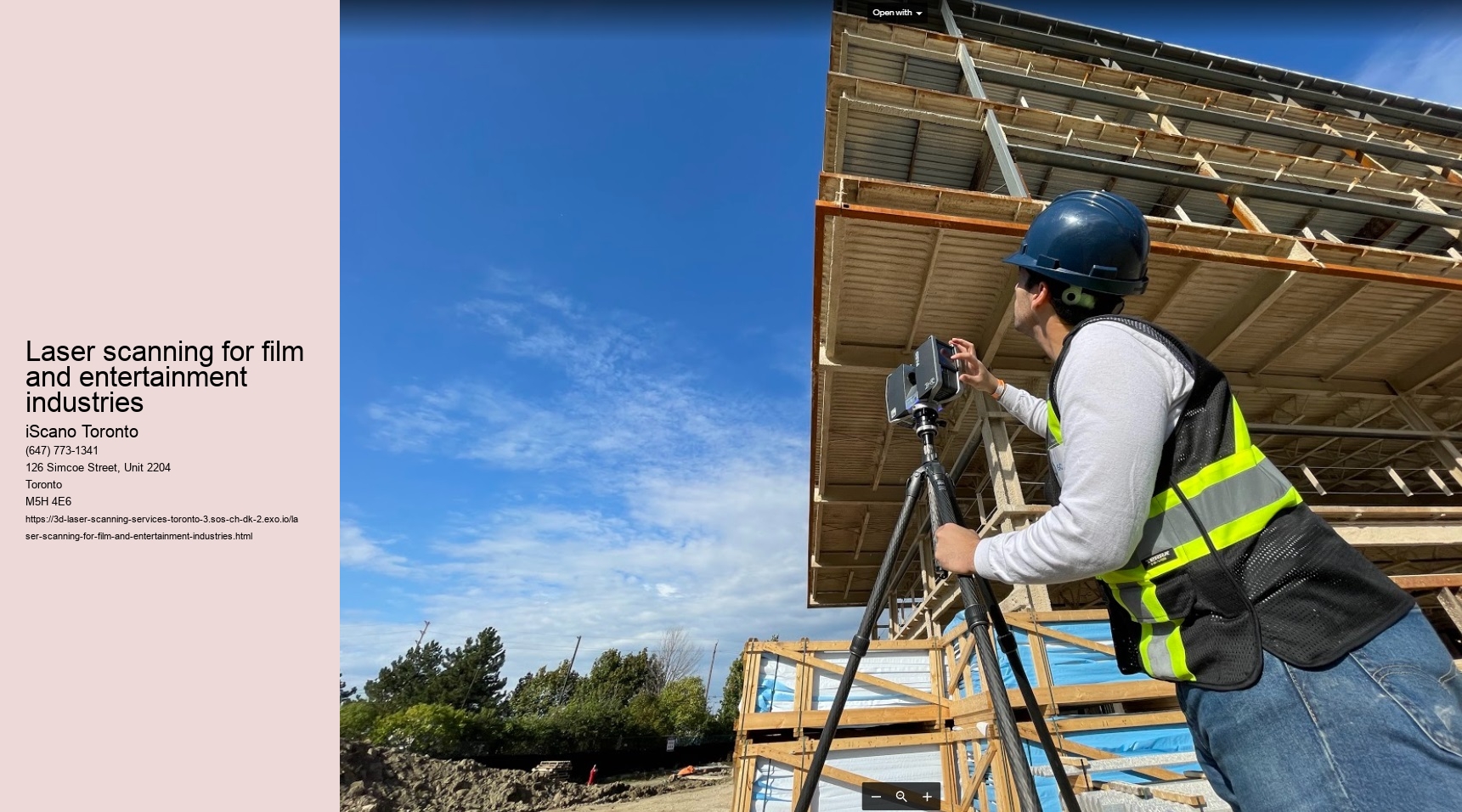Browsing the Future: How 3D Laser Scanning Services Are Transforming Industries
Laser scanning for film and entertainment industries .Intro
In the world of technical development, few advancements have actually been as transformative as 3D laser scanning services. These innovative devices have reinvented markets by providing exceptional precision, performance, and convenience. From style to archaeology, from producing to medication, the applications of 3D laser scanning are large and constantly broadening. In this short article, we delve into the complexities of this innovation and discover exactly how it is reshaping the landscape of various fields.
Understanding 3D Laser Scanning
At its core, 3D laser scanning is a non-contact, non-destructive technology that catches the form, size, and information of items or atmospheres by sending out laser light beams. These beam of lights bounce off the surfaces they come across, and the scanner determines the time it takes for each beam to return, thereby creating a point cloud—-- a collection of countless information factors that represent the object'' s geometry in three measurements.
The Advantages of 3D Laser Scanning
Among the main advantages of 3D laser scanning is its unrivaled precision. Typical methods of dimension commonly drop short in recording complicated geometries or detailed details, resulting in inaccuracies and inadequacies. With 3D laser scanning, however, even the most detailed surfaces can be captured with accuracy down to the millimeter, ensuring that every information is made up.
Moreover, 3D laser scanning is unbelievably efficient. Unlike standard evaluating methods that can be lengthy and labor-intensive, laser scanning allows for fast data procurement. A solitary scan can capture countless data factors in an issue of mins, substantially decreasing the time and resources required for information collection.
One more substantial advantage of 3D laser scanning is its non-destructive nature. Unlike physical measurements or invasive inspection methods, laser scanning does not require straight contact with the item being scanned, preserving its integrity and lessening the threat of damage.
Applications Throughout Industries
The convenience of 3D laser scanning has led to its extensive adoption throughout a myriad of industries. In architecture and building, as an example, laser scanning is made use of for as-built documents, clash discovery, and building details modeling (BIM). By precisely catching existing conditions, architects and engineers can improve the style process, lessen mistakes, and decrease pricey rework.
In the production sector, 3D laser scanning plays an important function in quality control, reverse design, and quick prototyping. By specifically catching the dimensions of parts and products, producers can recognize issues, optimize manufacturing procedures, and bring products to market quicker.
The influence of 3D laser scanning extends past the realm of industry and right into areas such as archaeology, forensics, and healthcare. Excavators use laser scanning to create in-depth 3D models of archaeological sites and artifacts, permitting online preservation and evaluation. In forensics, laser scanning is used to document crime scenes, collect proof, and reconstruct crashes with unequaled accuracy. In health care, 3D laser scanning allows customized prosthetics, orthotics, and implants tailored to the unique makeup of each patient.
Future Trends and Advancements
As innovation remains to advance, the future of 3D laser scanning holds immense assurance. One emerging fad is the integration of expert system (AI) and machine learning formulas into scanning software application, allowing automated attribute acknowledgment, information analysis, and modeling. This assimilation not only improves the speed and precision of scanning processes but also opens brand-new possibilities for data-driven understandings and decision-making.
In addition, improvements in hardware, such as the development of handheld and mobile scanning gadgets, are making 3D laser scanning a lot more easily accessible and portable than in the past. These compact and lightweight scanners empower users to capture information in remote or tough atmospheres, even more broadening the reach of this transformative modern technology.
Verdict
Finally, 3D laser scanning services are reinventing markets across the globe, providing unrivaled accuracy, performance, and convenience. From style to archaeology, from making to medicine, the applications of 3D laser scanning are unlimited. As modern technology remains to progress, the future holds also higher pledge, with innovations such as AI combination and mobile scanning gadgets positioned to further broaden the capacities of this transformative modern technology. In browsing the future, 3D laser scanning will most certainly remain to go to the center of innovation, reshaping industries and driving progress in the years to come.
